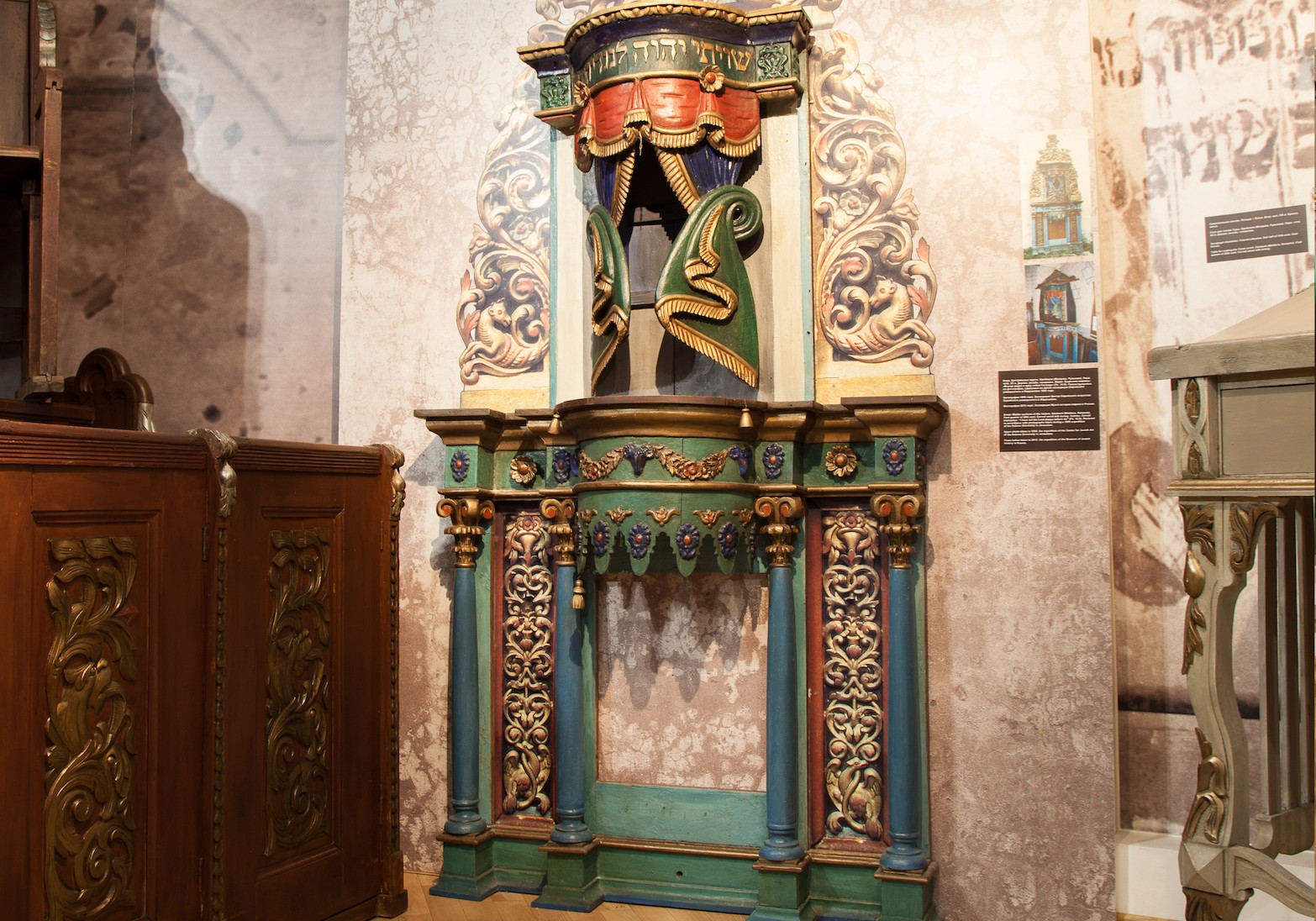


The temporary exhibition ‘In Defiance of Oblivion’ opens on 2 December at the Museum of Jewish History in Russia
This exhibition is modest in size but very representative for our museum. It is dedicated in its entirety to the memory of the destroyed and demolished synagogues of Eastern Europe, which constituted both Jewish ceremonial buildings and exemplars of national architectural styles.
The exhibition places on display for the first time certain unique objects that have never before been exhibited but which did appear in the recently published album of the museum’s collection. These include furniture items and ceremonial implements.
Jewish tradition assigns great significance to the synagogue and community life. However, over the course of the 20th century the synagogue, as a visual symbol of Jewish religion and culture as well as the embodiment of Jewish historical and architectural heritage, repeatedly became the target of hatred and vandalism.
In his book The Destruction of Galicia, written in 1920 following the Jewish pogroms of World War I, the noted ethnographer and writer S. Ansky (Shloyme Zaynvl Rappoport) directly connected the decline of East European Jewish civilization to the destruction of its synagogues.
Of the rare buildings that survived World War II, time has turned some into majestic ruins that have themselves come to form an inseparable part of the landscape in towns and villages across Belarus, Latvia, Moldova, Ukraine, Poland, and Romania.
The limited space of the exhibition hall does not allow for presentation of the synagogue interior in all its finery. However, the items chosen for display yield insight not only into the aesthetics and cultural traditions of East European Jewry, but also into the museum’s vision as a whole. ‘In Defiance of Oblivion’ presents an opportunity to express one of the highest priorities of the Museum of Jewish History in Russia: the saving and preservation of unique examples of the Jewish cultural and artistic heritage.
Achievements in this area include the restoration of salvaged fragments from the complete interior of a late 19th-century synagogue in the city of Odobești in Romanian Moldova (now Romania), as well as the preservation of the carved doors of a crumbling 17th-century synagogue in Chortkov in Galicia (now Ukraine). Both are on display in the new exhibition.
The exhibition is on view until the end of February 2016 and is open to visitors during the museum’s regular opening hours.

